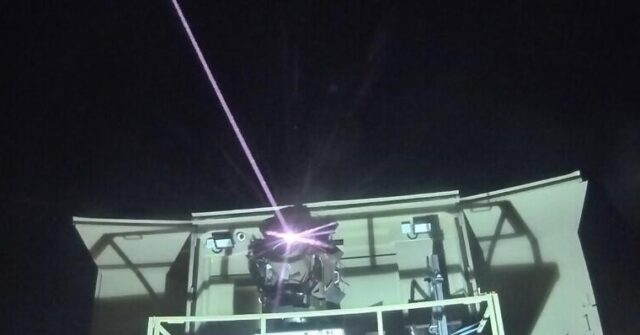Israel’s defense ministry has recently made strides in enhancing its military capabilities through the acquisition of a new laser interception system named Iron Beam. Unveiled in a landmark deal worth approximately NIS 2 billion (over $500 million), Iron Beam will run parallel to Israel’s existing Iron Dome missile defense system rather than replace it. Developed by Rafael Advanced Defense Systems and Elbit Systems, with Lockheed Martin joining the project in 2022, Iron Beam represents a significant advancement in aerial defense technology. The system is designed to become operational by 2025 and aims to provide a cost-effective solution for countering a range of aerial threats.
The Iron Beam system boasts the capacity to engage various aerial threats such as rockets, mortars, unmanned aerial vehicles (UAVs), and cruise missiles. This ground-based high-power laser system has undergone successful trials, demonstrating its impressive interception capabilities. The incorporation of Iron Beam within Israel’s multi-layered defense architecture will enhance the country’s overall military efficacy against a myriad of current and emerging threats. The combination of Iron Beam and Iron Dome exemplifies Israel’s commitment to maintaining a robust defense posture while simultaneously pursuing innovative and economical weaponry solutions.
Despite its promising features, there are concerns regarding Iron Beam’s performance under unfavorable weather conditions. Reports indicate that the system has not performed well in inclement weather, and it is currently over a year behind schedule in its development. These factors underscore the challenges involved in the deployment of state-of-the-art defense technologies. Nevertheless, the defense ministry asserts that Iron Beam will address future threats effectively and it is anticipated that the United States will also utilize the system, reflecting its importance on the international defense landscape.
The strategic enhancement that Iron Beam offers is particularly pertinent given the complex security environment in which Israel operates. As regional tensions persist, and new threats emerge, the need for advanced and adaptable defense measures is paramount. The integration of Iron Beam will bolster Israel’s deterrent capabilities and contribute to a higher level of security for the nation. Furthermore, this access to cutting-edge defense technologies underscores Israel’s position as a leader in military innovation and provides a platform for potential collaboration with allied nations, thus reinforcing geopolitical ties.
Emphasizing cost-effectiveness, the Iron Beam’s operational model indicates that its deployment will significantly reduce expenses compared to traditional missile interception systems. While Iron Dome has played a critical role in defending against rocket attacks, its reliance on costly interceptors makes it a less sustainable option in the long run. By combining laser technology with existing systems, Israel’s defense ministry aims to strike a balance between operational efficiency and economic feasibility in military preparedness.
In conclusion, the introduction of Iron Beam marks a pivotal moment in Israel’s defense strategy, blending advanced technology with cost-efficiency while enhancing its protective capabilities against evolving aerial threats. As this system approaches operational readiness, Israel stands to reinforce its security architecture, navigate the challenges of modern warfare, and maintain its strategic advantage in the region. The ongoing collaboration with partners such as the United States further illustrates the international significance of this development, positioning Israel at the forefront of combat-ready technological advancements in defense.

